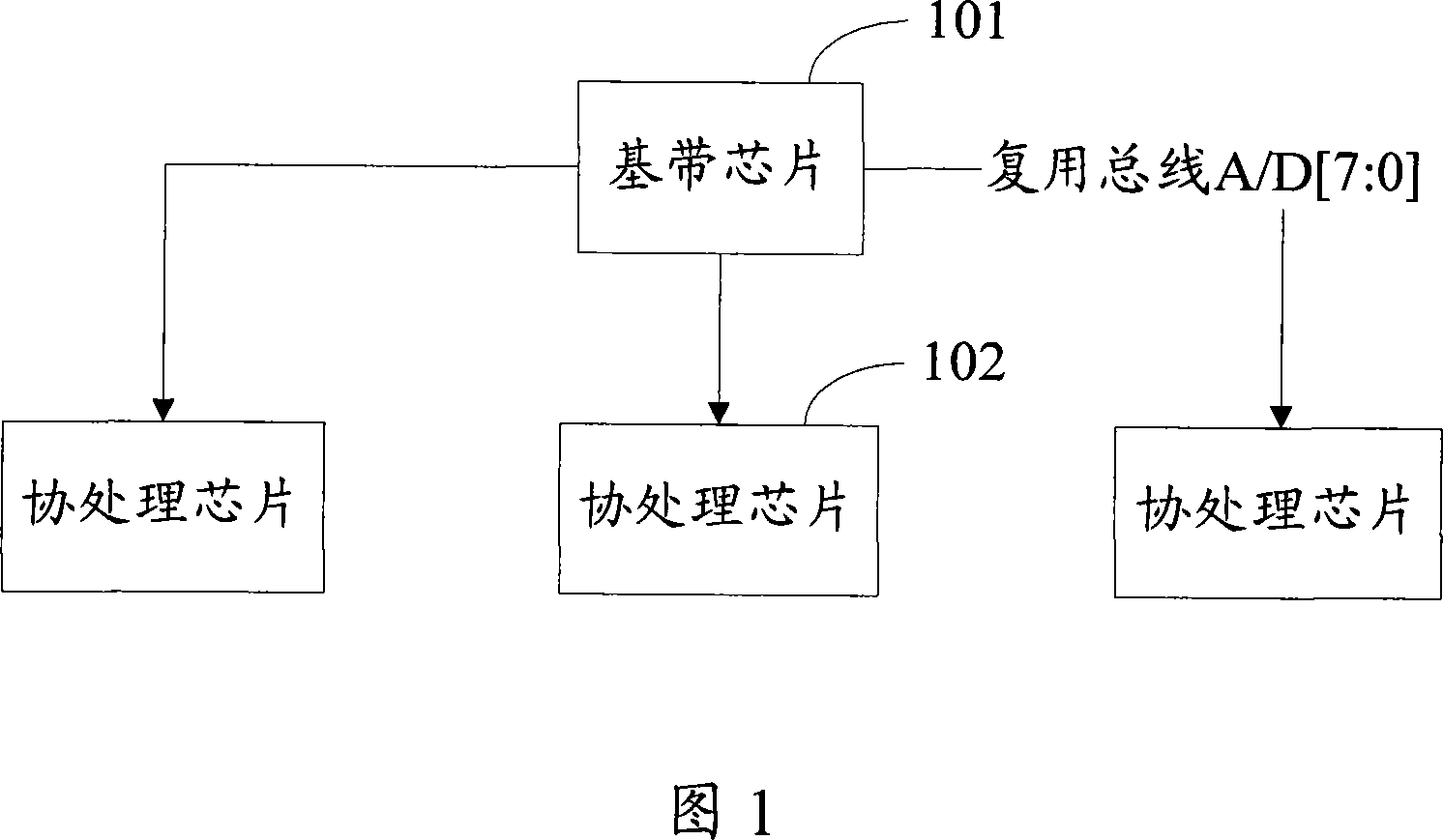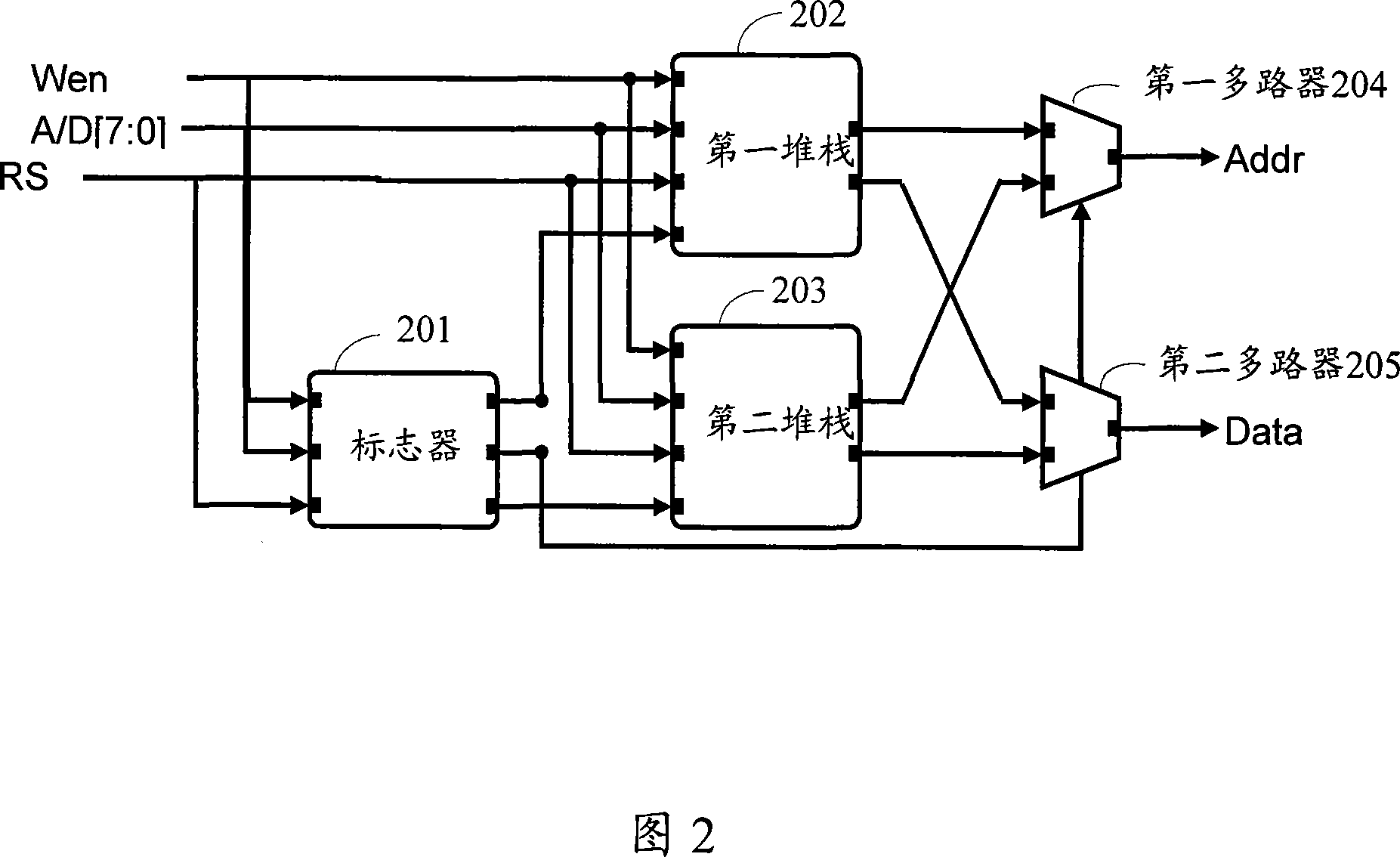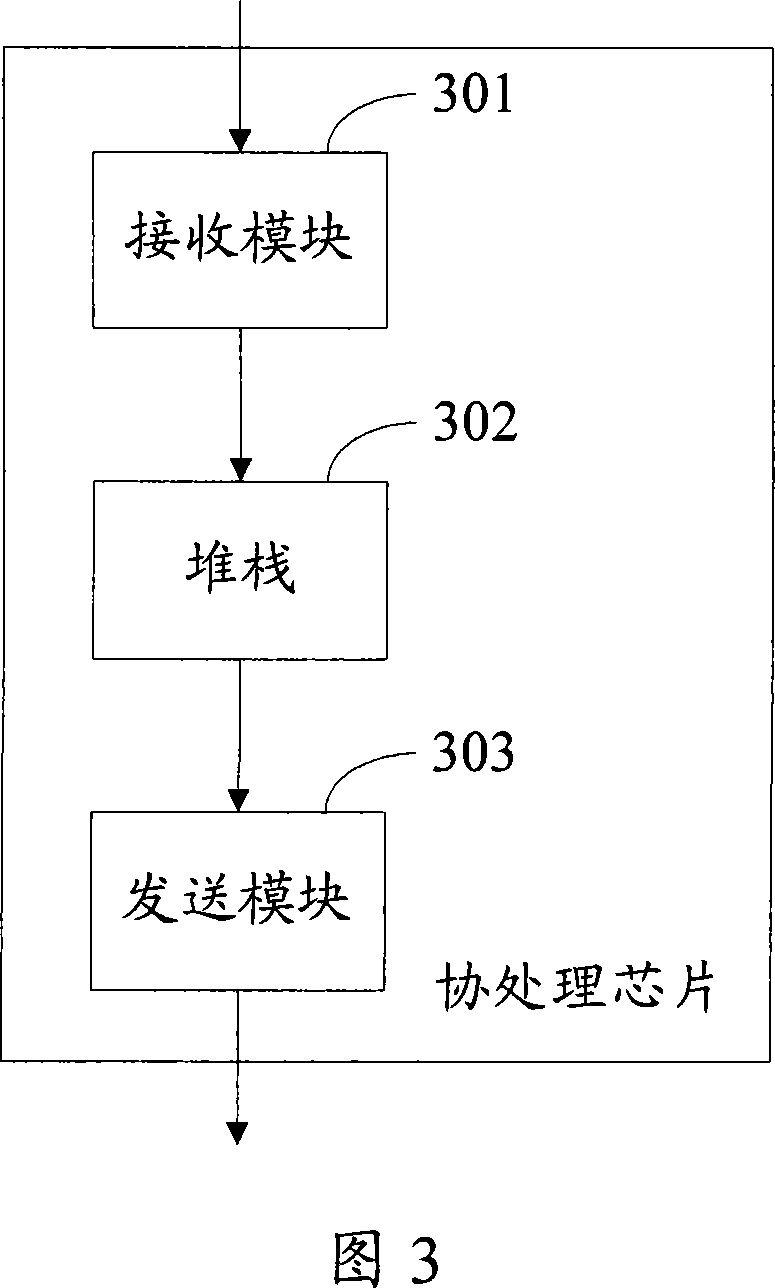Method and system for processing interruption
A processing method and technology of co-processing chips, applied in electrical digital data processing, instruments, etc., can solve problems such as affecting the processing speed of embedded systems, increasing software load, and large workload, saving system power consumption and reducing software load. , the effect of improving the processing speed
- Summary
- Abstract
- Description
- Claims
- Application Information
AI Technical Summary
Problems solved by technology
Method used
Image
Examples
Embodiment Construction
[0030] In this embodiment, when the baseband chip generates an interrupt, it sends an interrupt flag to the co-processing chip through the data / address multiplexing bus (hereinafter referred to as the multiplexing bus), and notifies the co-processing chip to perform operations related to the interrupt. This embodiment provides a co-processing chip including at least two hardware stacks (hereinafter referred to as stacks), one of which is used to process data and addresses in normal mode, and the other stack is used to process data and addresses in interrupt mode. The normal mode in this embodiment is relative to the interrupt mode, that is, the working mode after no interrupt is generated or the interrupt ends.
[0031] The baseband chip can send an interrupt flag to the co-processing chip through the data multiplexing bus in the form of data, or send the interrupt flag to the co-processing chip in the form of an address through the data multiplexing bus, depending on the locat...
PUM
 Login to View More
Login to View More Abstract
Description
Claims
Application Information
 Login to View More
Login to View More - R&D
- Intellectual Property
- Life Sciences
- Materials
- Tech Scout
- Unparalleled Data Quality
- Higher Quality Content
- 60% Fewer Hallucinations
Browse by: Latest US Patents, China's latest patents, Technical Efficacy Thesaurus, Application Domain, Technology Topic, Popular Technical Reports.
© 2025 PatSnap. All rights reserved.Legal|Privacy policy|Modern Slavery Act Transparency Statement|Sitemap|About US| Contact US: help@patsnap.com



